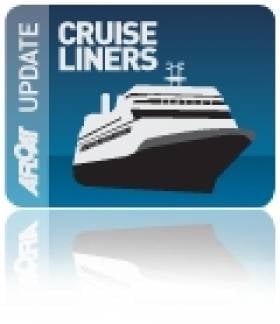Displaying items by tag: Cunard Countess
Double Role Recalled as Cruiseship Sails South
#CRUISELINERS – Cruise & Maritime Voyages Ocean Countess (17,593 tonnes) departed Liverpool's City Cruise Terminal this evening bound for Cobh, though thirty years ago she sailed considerably further south and for completely different reasons, writes Jehan Ashmore.
The 800 passenger capacity was built in 1976 for Cunard Line as their Cunard Countess which undertook an unusual charter less than a decade later. For six months she was used as a troopship by the British Government's Ministry of Defence after the conclusion of the Falklands War in 1982.
The vessel's deployment was to support troop movements between Ascension Island and Port Stanley whilst the islands airfield at Port Stanley was being reinstated.
She sailed 8,000 miles to the South Atlantic islands, where families and friends of British personnel lost in the conflict were also carried on one round voyage. This was to enable commemorations to take place at sea and ashore. Today marks the end of the war, where further commemorations were held on the islands and in the UK.
Former Soviet-Bloc Liner Continues Cruising
Cruising off the east coast of Leinster this evening is the veteran cruiseship Marco Polo which is bound for the Scilly Isles off Land's End, writes Jehan Ashmore.
For those with an appreciation for the more traditional tiered deck profile compared to the bulky new giant cruiseships, the 22,080 tonnes vessel built as the Aleksandr Puskin at the Mathias-Thesen-Werft, East Germany, certainly represents a different era.
The liner entered service in 1966 with the Baltic Shipping Company on their regular trans-Atlantic Montreal-Leningrad service. In 1975 she was converted for her new role as a full-time cruiseship. For a cut-away deck profile and description of facilities click here.
She can take 850 passengers accommodated in 450 cabins. Her main dimensions reflect her ocean-going design noting her draft is 8.2m (26.9ft) with a length of 176.3m (578.4ft) and a beam of 23.6m (77.4ft). Crewing is divided between senior officers (international) and cruise staff and entertainers are both British and comprising of other nationalities.
In recent years Marco Polo served the German market but she now is run by Cruise & Maritime Voyages (CMV) on cruises from the UK. The company also operate the Ocean Countess which first started out her days as Cunard Countess.





























































